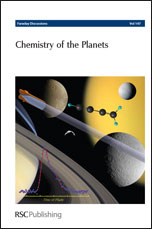The fate of aerosols on the surface of Titan
Abstract
A laboratory study based on the chemical transformation that Titan's aerosol analogues suffer when placed under putative surface conditions of the satellite was performed. In order to understand the role that aqueous
- This article is part of the themed collection: Chemistry of the Planets

 Please wait while we load your content...
Please wait while we load your content...